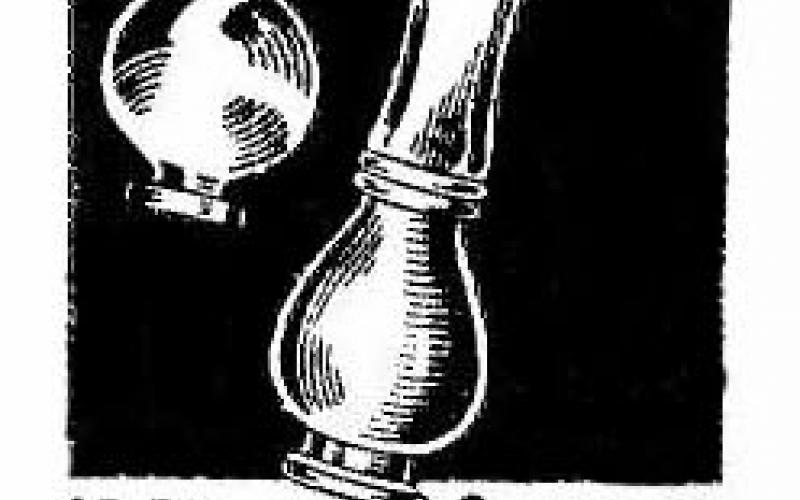
In December 1959 Mrs. Peter Zelinski, of Millburn, was talking to her friend Jeanette Hausler of Springfield, when Dr. Marvin Becker broke into their shared party line, to ask them to hang up as a patient of his had a medical emergency and he needed to call an ambulance. Dr. Becker later testified that he tried five more times to gain access to the line, but the women refused to get off and, in fact, he testified to Millburn’s magistrate Milton Freiman, they told him to “Go to hell.” Dr. Becker said he finally got access to the line after fifteen minutes. The magistrate found Mrs. Zelinski guilty of refusing to interrupt her party line conversation to allow the doctor to make an emergency call and fined Mrs. Zelinski a then-whopping $210.
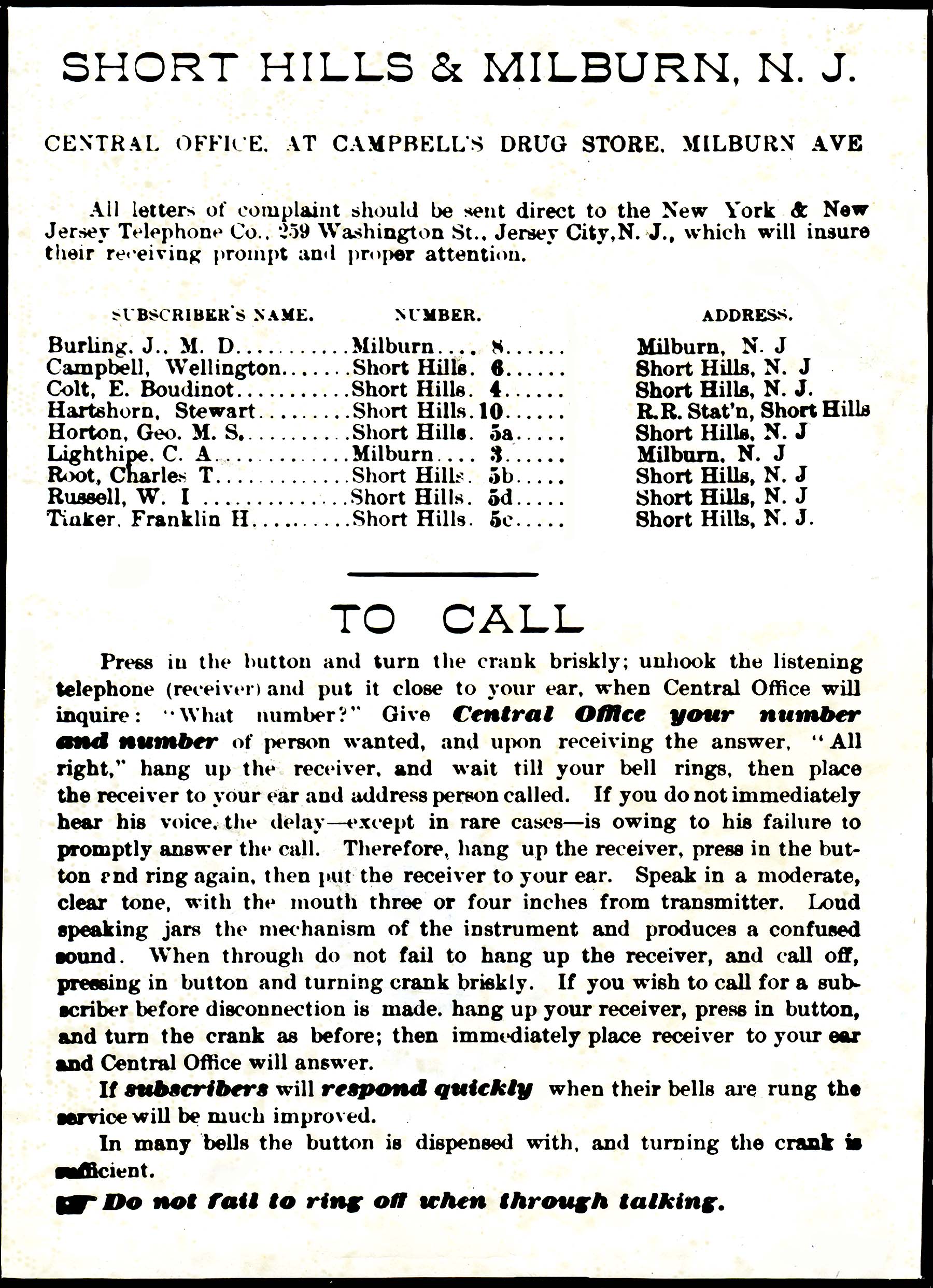
I remember the party line we had when I was a child and I amused myself a few times by listening in on the other conversations…until one of the parties said it was obvious someone else was on the line and listening in. According to Wikipedia, a party line is a “local loop telephone circuit that is shared by multiple telephone service subscribers.” and “A majority of Bell Telephone subscribers in the mid-20th century in the United States and Canada were serviced by party lines, which carried a billing discount over individual service; during wartime shortages, these were often the only available lines.” Wiki adds that as the calls were not private, “Objections about one party monopolizing a multi-party line were a staple of complaints to telephone companies and letters to advice columnists for years and eavesdropping on calls remained an ongoing concern.” They humorously noted “In December 1942, University of Tennessee’s strategy in an American football game versus University of Mississippi was revealed to the opposing coach as a telephone on the Ole Miss team’s bench had been inadvertently wired to the same party line.” New technology led to the demise of party lines, which were removed in most places by the 1980’s.
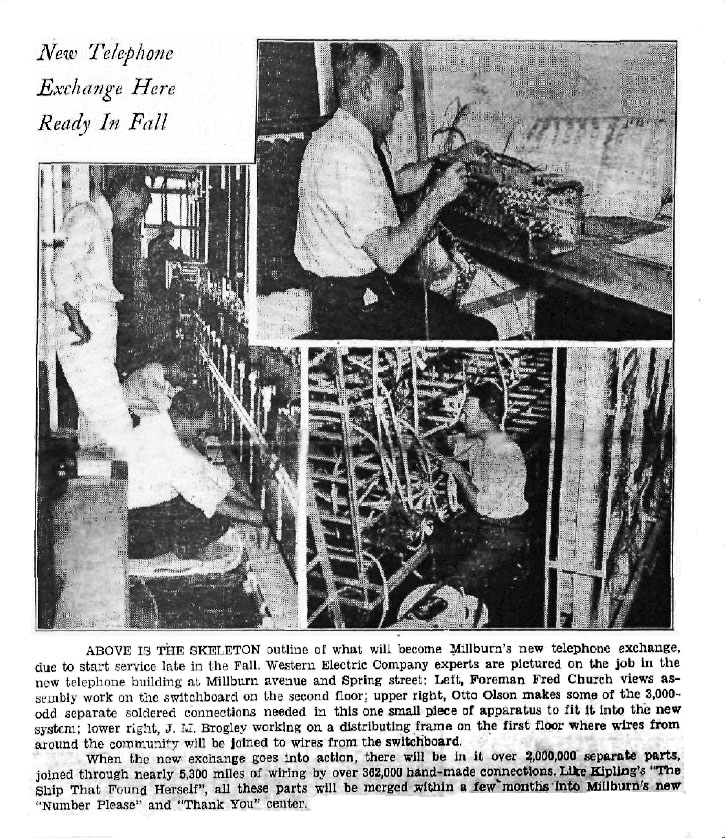
An online 2012 Saturday Evening Post article ( https://www.saturdayeveningpost.com/2012/06/operators-heard-1907/ ) about early telephone switchboard operators, stated it was not unusual for operators to eavesdrop on calls: “The anonymous author of “The Diary of a Telephone Girl: The Work of a Human Spider in a Web of Talking Wires” readily admitted eavesdropping.” In 1884 in Millburn, when the first switchboard was installed in the back room of Campbell’s Drug Store (about where the Millburn theater is now), the eavesdropping was likely a bit dull, as there were only nine subscribers, as can be seen in the ad here for the telephone central office at Campbell’s.
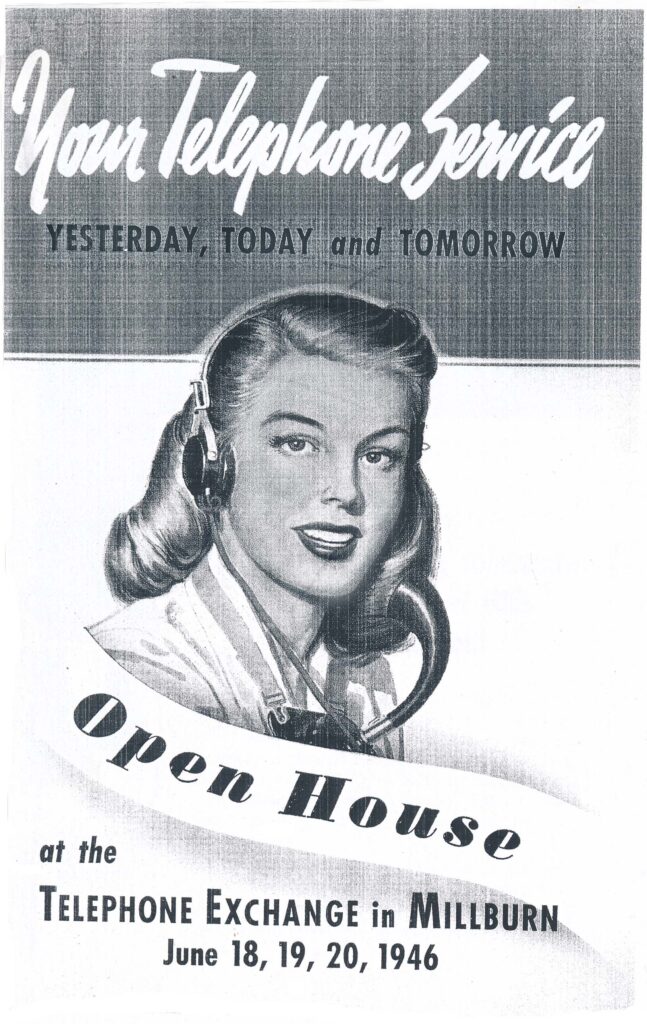
Millburn historian extraordinaire, Marian Meisner, noted in 1889 there were 14 subscribers and by 1957 the Drexel 6 (that is 376) and Drexel 9 (i.e., 379) exchanges served over 8,000 subscribers.” Ms. Meisner observed that the “first operator, Miss Mary Walsh, was engaged to take care of the nine subscribers. Her night relief operator was James Hand, who, it is said, amused himself during the quiet night hours by playing phonograph records over the telephone, for the pleasure of other night operators in nearby locations. Thus, young Mr. Hand may have been the first disk jockey.”
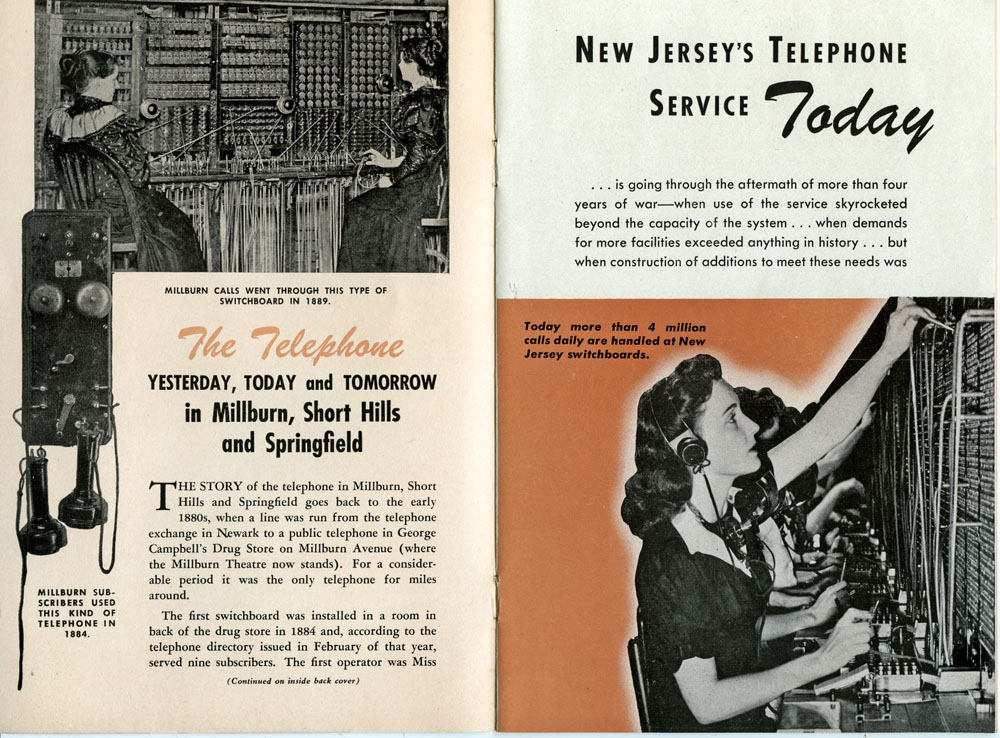
In 1938 Millburn’s new telephone exchange started service in a new building still at the corner of Millburn Avenue and Spring Street and now belonging to Verizon. The newspaper ad seen here noted over 5,300 miles of wire from around the community was to be joined to wires from the switchboard. After WWII demands for service exceeded anything in history and in 1946 “Your Telephone Service” hosted a three-day open house in that telephone exchange building at Millburn and Main. I sometimes peek in the windows of the building when I walk by, to see how it has changed, but there is not much to see, other than large blocks of equipment. Have any of you ever been inside?
When the school children visit the museum now we talk about items in the collection, many of which are obsolete. I then show them an example of the Diala-Pen in the 1959 ad here and they try to guess what it was used for (“popsicle stick?” “to polish ladies’ nails?”). Unless there is an older visitor/aide with them who eventually recognizes it, we usually have to bring out the old rotary dial telephone and demonstrate how it was used. It is inevitably the favorite thing they all want to try out when the talk is over. In fact, it is so popular we have collected a few different examples of them, so they can all try to dial with it. Of course, we first have to explain what ‘dial the number’ means!
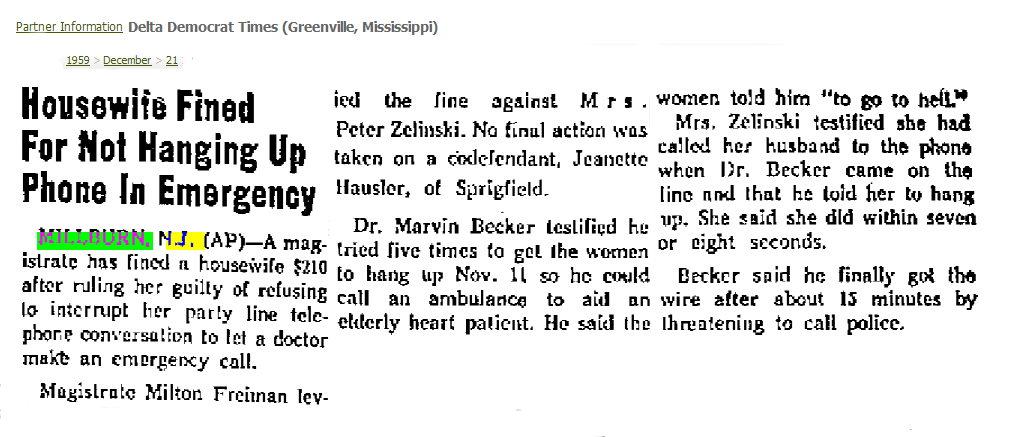
It is probably time to add “finger-saving” flip phones to our collection…and to muse about how telephone communication will change by 2050…